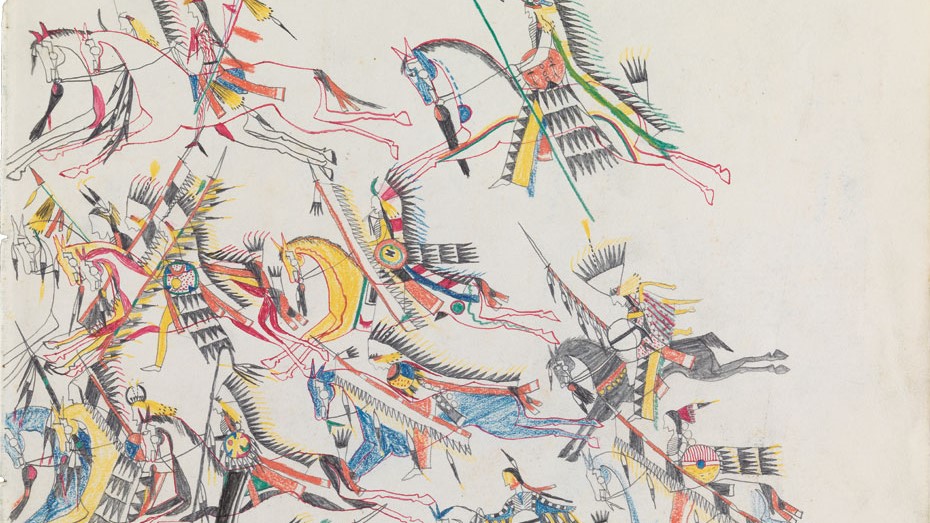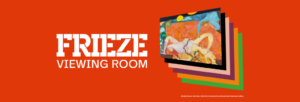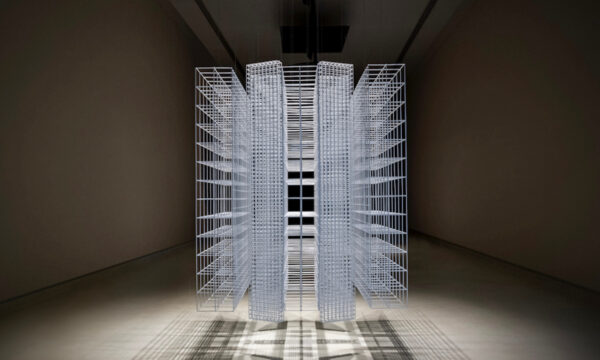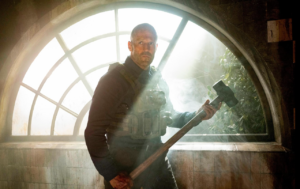Frieze New York 2020: Frieze Viewing Room online

Frieze’s contemporary international art fairs have been fixtures of the art world calendar since the inaugural event was set up in 2003 in London, by Amanda Sharp and Matthew Slotover, founders of Frieze magazine. The fair has been held annually in New York since 2012 on the city’s Randall’s Island. In March this year, the coronavirus outbreak led to a decision by the organisers to cancel the physical event, and Frieze New York opted for a digital form. Frieze Viewing Room was launched online between the 8th and 15th May. A VIP preview took place between the 6th and 7th.
Anyone who has visited Frieze London or New York will be aware of the Herculean task involved in exploring the full breadth of art on show. In its current online form, once visitors have registered, be they collectors or mere art enthusiasts, they can navigate the fair from the comfort of their own home at leisure. Victoria Siddall, Global Director of Frieze Fairs, and her team have ensured that the site is easily accessible. This year there are more than 200 art galleries from around the world taking part and, in addition, specially commissioned artists’ projects.
Loring Randolph, the director of Frieze New York, provides a video introduction in the Viewing Room, discussing the important aspects of this year’s edition. There’s also a welcome from Victoria Siddall and Claudio de Sanctis, Global CEO of Deutsche Bank Wealth Management, the event’s long-term sponsor. The Chinese “dissident” artist Ai Wewei – honoured with a career retrospective at the RA in 2015 – appears in a video link conversation on the subject of art and activism with Ken Roth of Human Rights Watch. There’s also a video of Norwegian artist Bjarne Melgaard discussing the virtual reality work My Trip with Daniel Birnbaum, curator and director of Acute Art, which is being shown in the Viewing Room.
The featured galleries have been arranged into several subsections in the Galleries area of the Viewing Room. “Frame” showcases work from galleries ten years or younger. “Spotlight” is devoted to so-called “20th-century pioneers”. The “Special Programming” section focuses on women artists with a relationship to Chicago, commemorating the tenth anniversary of the ratification of women’s suffrage in the United States. Frieze New York is also continuing its collaboration with El Museo del Barrio, New York. Entitled “Dialogos”, this section draws attention to artists of Latin heritage. The “Specialist Exhibition” sees a collaboration with Collective Design and the presentation of historical and contemporary design and art objects. A “Non Profits” section features work by non-profit participants: Cal Arts, White Columns from New York, and Allied Editions – a collective of London arts organisations showcasing specially commissioned limited editions. There is also a series of works the sales of which will be used for the benefit of individuals affected by COVID-19.
Frieze New York is truly a worldwide affair, with artists from every corner of the planet. The Donald Ellis Gallery are presenting historical works by Native Americans. Ledger drawings enabled tribes like the Cheyenne and Arapaho to record their history with an absence of written languages. A highlight here is a drawing attributed to the Cheyenne William Cohoe (Tsististas) (1853-1924). Cheyenne Attacking a Pawnee Camp (1875-78) is a dramatic depiction in graphite and coloured pencils of mounted warriors galloping at full tilt into battle, the artist conveying their speed by leaving the top right of the drawing blank as they hurtle towards their foe on the other side.
If the greats of Impressionism and 20th century art are more your style, head to the Acquavella galleries. Up for sale is an oil on canvas by Gustave Caillebotte, an independently wealthy Impressionist painter, perhaps best known for Paris Street; Rainy Day (1877), a painting of umbrella wielding, well-heeled Parisians. Voiliers sur la Seine a Argenteil, on show here, however, offers a more idyllic scene of a couple of figures sailing their boat serenely down a calm Seine on a beautiful day.
The Bank gallery are presenting a lively new series of figure drawings by the New York-based Oliver Herring. Encouraging his sitters to express themselves, he draws each nude in order to “enforce visibility”, increasing the degree of intimacy. Sonny, his last sitter before lockdown, is portrayed with confidently open stance, eyes boldly meeting those of the viewer, his late grandmother’s rosary beads hanging down from his neck.
The Dialogos section, returning after a successful 2019, celebrates Latin/Latinx and Latin American artists. Sao Paulo’s Almeida e Dale Galeria de Arte presents a series of palm rib sculptures by the late Mestre Didi (1917-2013), who was a dominant force in Afro-Brazilian visual culture. Powerful pieces like Iwin Ola Ati Eye Loke – Majestic Ancestors of the Tree with Bird on Top (1977-78) reveal how he reworked symbols of Yoruba ancestral ritual into contemporary compositions.
Johannesburg-based artist Billie Zangewa, exhibiting with Lehmann Maupin, has attracted much interest with her delicate collages made up of hand-stitched fragments of silk. Works like In My Solitude (2018) are, in her own words, “a kind of self-therapy and silk is a bi-product of transformation… transforming trauma and pain into a beautiful work of art.”
Kathleen Ryan, showing with Francois Ghebaly gallery, Los Angeles, has recently produced a series of large sculptures she has collectively named Bad Fruit. Displayed in this fair is Bad Melon (Big Chunk) (2020), which might intrigue and raise a smile. Composed of glass beads, gems and stones and other found objects, it captures the collapsing structure of rotten fruit. Beautiful and amusing on one level, on another it possesses an ugliness and sense of unease. Ryan uses a rusty old 1973 Airstream Safari camper for the rind.
The Chicago Tribute section celebrates the contributions of artists with current or historical ties to Chicago, marking the centenary of the ratifying of the USA’s 19th amendment, which gave women the right to vote. Julie Rodrigues-Widholm, the area’s curator, states: “[T]he ongoing lack of equity in the art market and museum collections is being acknowledged.” Known as the Queen of Bohemia in 40s and 50s Chicago, and a friend of Dizzy Gillespie and Charlie Parker, Gertrude Abercrombie’s small, magic realism paintings like Walls (1964) are loaded with mystery. Suellen Rocca, who died in March this year, was a founding member of the Chicago group The Hairy Who. Her displayed Lamp Poem of 1969 (oil on canvas with fabric) shows her characteristically using consumerist imagery with an element of pop art. In the centre, a shapely lamp alluding to the female form is flanked by written “Ooh!”s and “Ahh!”s. Rocca clarified that at the time the sources of her imagery were “the cultural icons of beauty and romance expressed by the media that promised happiness to young women.” The multi-disciplinary artist and committed eco-feminist Faith Wilding, of the Anat Ebgi gallery, came to prominence during the late 60s in Los Angeles, alongside other feminist artists such as Judy Chicago. Her recent watercolour works Spells (2020) and 3 Dragons; 1 Goddess (2020) pulse with the spiritual life force of the natural world whilst highlighting how the environment, especially that of South America and her native Paraguay, has suffered at the hands of humanity.
According to Loring Randolph, Frieze New York’s director, more people logged on in the opening 15 minutes of the VIP preview online this year than entered the fair during the first 15 minutes of the VIP preview on Randall’s Island last year. Some major galleries have apparently enjoyed a healthy level of sales so far, although that has been by no means a universal experience. Organisers have definitely made efforts to maximise the potential of the digital format, providing an augmented-reality feature in the app that allows collectors to see how works look on their walls. Victoria Siddall, the global director of Frieze, said at the preview: “It’s about making sure everybody gets through this time and comes through the other side in decent shape, and that means everyone, from galleries and museums to nonprofits and artists.” Siddall is right, of course. Even though this year’s digital-only Frieze New York allows one to explore the fair from a laptop or smartphone, negating the need to either fly to the Big Apple or strain one’s feet, the commercial art industry and the public alike will be united in hoping that 2020 proves an exception.
James White
Image: Detail from William Cohoe, Cheyenne Attacking a Pawnee Camp (1875-8). Courtesy of Donald Ellis Gallery, New York
Frieze New York 2020: Frieze Viewing Room is available to enter on the Frieze website from 8th May until 15th May 2020. For further information visit the fair’s website here.























Facebook
Twitter
Instagram
YouTube
RSS